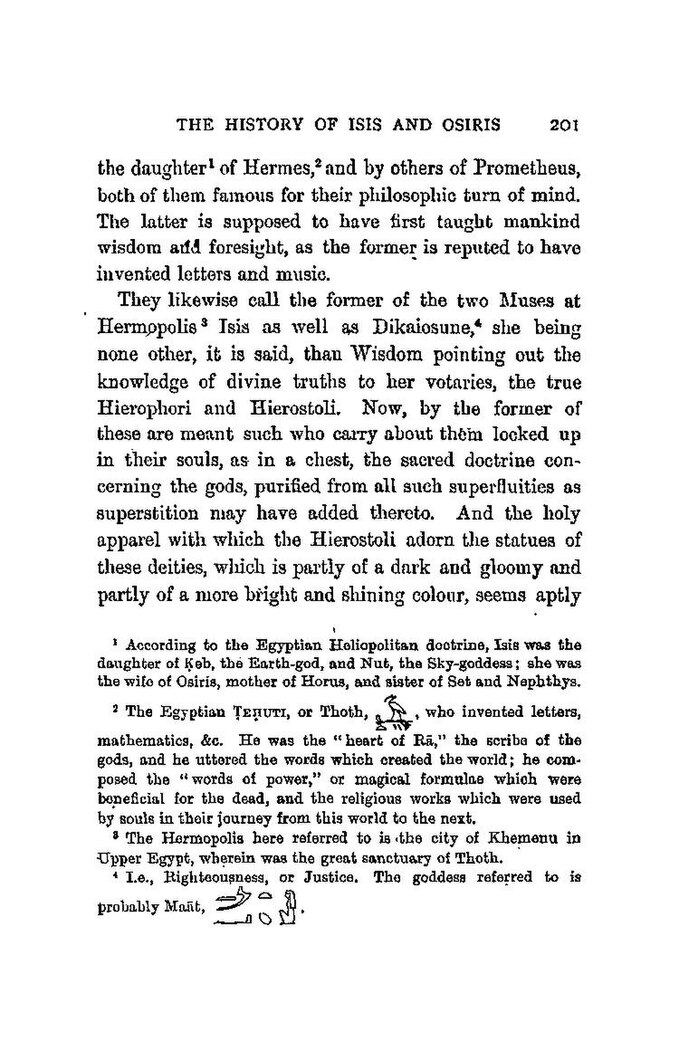the daughter[1] of Hermes,[2] and by others of Prometheus, both of them famous for their philosophic turn of mind. The latter is supposed to have first taught mankind wisdom and foresight, as the former is reputed to have invented letters and music.
They likewise call the former of the two Muses at Hermppolis[3] Isis as well as Dikaiosune,[4] she being none other, it is said, than Wisdom pointing out the knowledge of divine truths to her votaries, the true Hierophori and Hierostoli. Now, by the former of these are meant such who carry about them locked up in their souls, as in a chest, the sacred doctrine concerning the gods, purified from all such superfluities as superstition may have added thereto. And the holy apparel with which the Hierostoli adorn the statues of these deities, which is partly of a dark and gloomy and partly of a more bright and shining colour, seems aptly
- ↑ According to the Egyptian Heliopolitan doctrine, Isis was the daughter of Ḳeb, the Earth-god, and Nut, the Sky-goddess; she was the wife of Osiris, mother of Horus, and sister of Set and Nephthys.
- ↑ The Egyptian Ṭeḥuti, or Thoth,
, who invented letters, mathematics, &c. He was the "heart of Rā," the scribe of the gods, and he uttered the words which created the world; he composed the "words of power," or magical formulae which were beneficial for the dead, and the religious works which were used by souls in their journey from this world to the next.
- ↑ The Hermopolis here referred to is the city of Khemenu in Upper Egypt, wherein was the great sanctuary of Thoth.
- ↑ I.e., Righteousness, or Justice. The goddess referred to is probably Maāt,


![X1 [t] t](/w/extensions/wikihiero/img/hiero_X1.png?f2a8c)


